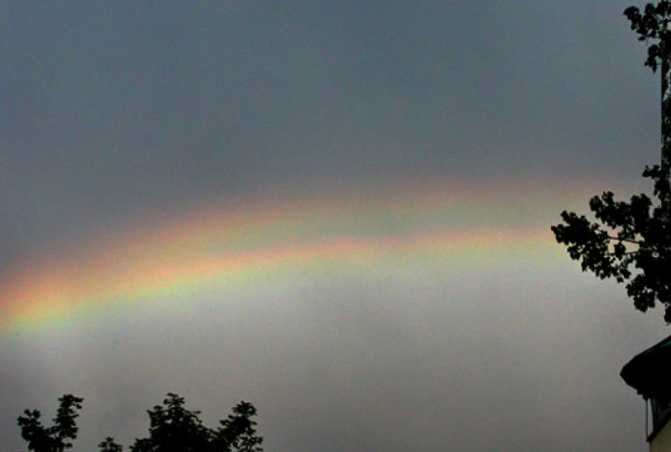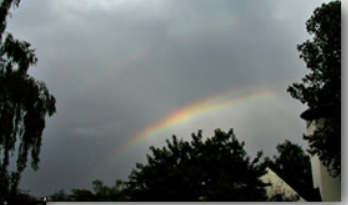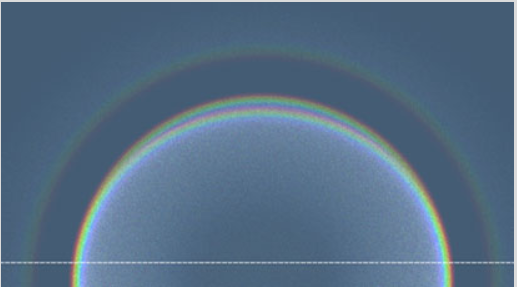Twinned Rainbows
Exploring the Phenomenon of Rainbows
Rainbows are one of nature's most enchanting and captivating optical phenomena. We are all familiar with the sight of a vibrant arc of colors stretching across the sky after a rain shower, but there is more to rainbows than meets the eye. While most rainbows consist of a single arc, there are instances where a phenomenon known as "twinned bows" occurs, leaving observers in awe and scientists puzzled.
The Mystery of Twinned Bows
Twinned bows, as the name suggests, appear as if the primary rainbow has split into two equivalent bows. These intriguing occurrences have been captured on camera, mostly during heavy showers. However, despite extensive observations, there is currently no agreed-upon explanation for their formation. These twinned bows cannot be attributed to reflection or supernumerary bows, as they do not align with the expected positions.
Exploring Possible Explanations
Scientists have proposed various theories to unravel the mystery of twinned bows. One hypothesis suggests that a combination of water drops and ice spheres may contribute to their formation. While diffuse ice-sphere bows are possible, the sharp and distinct twinned bows observed present a challenge. The required sphericity and optical quality of ice balls to produce such clear twin bows are unlikely to occur naturally. Additionally, if ice spheres were responsible, a twinned secondary bow should also be observed, which has not been reported thus far.
Non-Spherical Raindrops and Bow Distortion
An alternative theory focuses on the shape of raindrops. While small raindrops remain spherical due to surface tension forces, larger drops can become flattened by air resistance as they fall through the atmosphere. Numerical ray tracing simulations have shown that even a slight departure from perfect sphericity, on the order of 1-2%, can noticeably distort the primary bow. This raises the question of whether non-spherical raindrops could be responsible for twinned bows.
The Role of Non-Sphericity
To explore the possibility of non-sphericity causing twinned bows, simulations were conducted using a mixture of spherical drops and oblate spheroids. These spheroids, which have their vertical axis shortened by 2.5%, were chosen for convenience in the calculations. The simulation demonstrated that the lower bow in the twinned pattern could arise from these oblate spheroids. However, it is important to note that this example does not imply that oblate spheroids are the sole cause of twinned bows. It merely suggests that departures from sphericity, in any form, could contribute to their formation.
Unraveling the Nature of Twinned Bows
Despite these theories, the true nature of twinned bows remains elusive. Further observations and close-up images are essential to deepen our understanding of this phenomenon. By capturing images of the 'twins' at known focal lengths, wider angle images around the bow, and if possible, the secondary bow, researchers can measure the primary-secondary spacing and identify any departures from circularity. Additionally, detailed exposures can reveal the intricate structure of the secondary bow, providing valuable insights into its formation. Combining these observations with meticulous records of local weather conditions will help unravel the mystery behind twinned bows.
Rainbows have fascinated humanity for centuries, and their allure continues to inspire awe and wonder. While we have made significant strides in understanding their formation, there are still mysteries to unravel. Twinned bows represent one such enigma, challenging scientists to delve deeper into the intricacies of atmospheric optics. With ongoing research and continued observation, we inch closer to uncovering the secrets behind these mesmerizing phenomena.


An anomalous "twinned" rainbow seen by Benjamin Kühne (site ) on 3rd June 2002.
The primary appears to split into two equivalent bows. The inner bow does not at all resemble a supernumerary.
Images ©2002 Benjamin Kühne, reproduced with permission.
Several "twinned bows" have been imaged, mostly during heavy showers, but currently there is no agreed explanation for them. They cannot be reflection bows because at the time most were imaged, the reflection bow from a horizontal water sheet would be in quite a different position. They mostly do not resemble supernumerary bows and attempts to model them with Mie or Airy scattering models using spherical water drop populations fail. They might form from a mixture of water drops and ice spheres. Although diffuse ice-sphere bows might occur, ice balls of the required sphericity and optical quality to produce the observed sharp twinned bows are unlikely. A twinned secondary should also then be observed and so far it has not.

A stronger possibility is that non-spherical raindrops produce one or both bows. Surface tension forces keep small raindrops fiercely spherical but as they fall large drops are flattened by air resistance or might even oscillate between flattened and elongated spheroids.
Numerical ray tracing by BowSim shows that departures from sphericity by a mere 1-2% noticeably distort the primary bow. We have to marvel that rainbows are ever seen!
The BowSim computation at right is for a mixture of spherical drops and oblate spheroids that have their vertical axis shortened by 2.5%. This could for example be produced by two showers falling through an observer's rainbow cone, one of smaller spherical drops and the second of large drops flattened by air resistance. The lower bow is from the oblate spheroids. At the simulation solar altitude of 5º the secondary bow is undistorted. This example is not to suggest that oblate spheroids, merely convenient for the calculation, are required to make twinned bows but rather that twinned bows could be produced by some type of non-sphericity.
We need more observations of twinned bows to better know their nature; close-up images at known focal lengths of the 'twins', wider angle images around the bow and if possible the secondary in order to measure the primary-secondary spacing and thus any departures from circularity, exposures to show the detailed structure of the secondary, all combined of course with the local weather conditions.
Note: this article has been automatically converted from the old site and may not appear as intended. You can find the original article here.
Reference Atmospheric Optics
If you use any of the definitions, information, or data presented on Atmospheric Optics, please copy the link or reference below to properly credit us as the reference source. Thank you!
-
<a href="https://atoptics.co.uk/blog/twinned-rainbows/">Twinned Rainbows</a>
-
"Twinned Rainbows". Atmospheric Optics. Accessed on November 26, 2024. https://atoptics.co.uk/blog/twinned-rainbows/.
-
"Twinned Rainbows". Atmospheric Optics, https://atoptics.co.uk/blog/twinned-rainbows/. Accessed 26 November, 2024
-
Twinned Rainbows. Atmospheric Optics. Retrieved from https://atoptics.co.uk/blog/twinned-rainbows/.